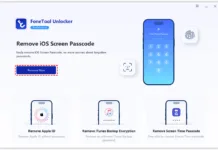In the digital era, websites are essential to the success of any business and national boundaries are becoming less of an issue for international communication. However, the user experience needs to be natural to each audience in any corner of the world you want to conquer if you hope to succeed on a global scale.
While it may seem as if translating the contents of a website into a new language is enough to launch a business in a new market, without a proper localization strategy, the website might never be able to build a good reputation among the target audience.
When a product or service is properly localized, it’s modified so that it can be used in a particular region or country. Altering text and visuals is one example, but more broadly, it refers to steps taken to make anything a business sells and anything it uses to communicate with the local audience socially and culturally appropriate and familiar.
It’s making any necessary adjustments to the functionality or components to make them more accessible to the target audience in their native language and cultural context.
Invest in TMS
Many different translation software solutions can be of great help when trying to break into new international markets. But none is more versatile, useful, and competent when it comes to completing complex professional website localization projects with great results than an apt translation management software, also known as a translation management system (TMS).
The primary function of this tool is managing the many stages of a translation or localization project.
Using TMS will allow your team to save time and effort by automating tedious manual processes, enhancing workflow management, fostering better collaboration, and boosting productivity.
Most importantly, each task involved in the localization project can be simplified and sped up without sacrificing translation quality and accuracy, or reliability.
Understand the new market and the local culture
Before beginning work on a website for the international market, it’s important to learn as much as possible about the target culture, as well as its current state of internet access.
Keep in mind that a website heavy on graphics and animation may be difficult to view on a computer screen in nations with slower connections than, say, the United States. It could take several seconds or even minutes, longer for the same page to display correctly.
Furthermore, things that may seem inconsequential in your culture may have far-reaching impacts on another, and this is something to bear in mind when localizing your website. For instance, in a certain region or among certain people, the colors, images, videos, etc. used on your website, the way something is said, or even the message you want to convey with your content may be offensive.
To appeal to a new target audience, aside from providing appropriate translation you must also tailor everything to your audience’s specific likes, dislikes, and other idiosyncrasies.
Dates, names, phone numbers, etc., should be formatted under the target market’s standards, and pricing should be displayed in the target market’s currency and measurement units.
Plan ahead
You can easily expand your audience to include people from all over the world with a good website, especially if it’s in more than one language. And if you design it with internationalization in mind from the beginning and take into account the unique challenges of maintaining a multiple-language website localization with all of its nuances will be a much faster and easier process.
It’s also important to make sure that you develop a scalable website, as well as choose a platform that can cope with the growth. Knowing how many and which languages your website will support can be very helpful.
One way to make sure that you have everything prepared to start localizing your website is through a technique known as pseudo-localization. In short, this will stimulate the effects of translation on the user interface without a real translation.
The content you will need to translate, later on, will be swapped out for text in a modified form of your language—an unreal language, accounting for different lengths of the words, different grammatical rules, etc.
Conclusion
Website localization, or the process of adapting your website to the requirements of a new market so that it may be used by users in the region as if it were intended for them, is an essential component of expanding a business globally.
The steps of web localization include professional translations, currency conversions, adjustments to the aesthetics (such as the use of different colors or symbols if necessary), and so on. As more companies branch out into global trade, localization is growing in significance, becoming essential in any company’s efforts to stay ahead of its international and local competition.





